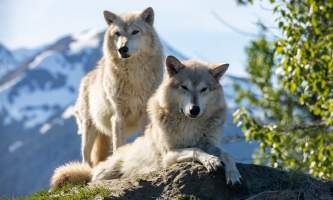Wolves
Howdy hey, here we are at the Gray Wolf habitat at the Alaska Wildlife Conservation Center.
Wolves are the largest member of the canid family that live in Alaska. Adult males can weigh anywhere from 85 to 120 pounds, some of the largest males reaching close to 150 pounds, while females average 10 to 15 pounds lighter than their male counterparts.
Wolf society is in its truest form, a family unit, or pack. The pack is comprised of family members all working together for the greater good of the pack at all times. Pack size can range from 5-7 wolves and grow as large as 20 or 30 wolves. Researchers have moved away from linking wolf society to a dominance theory, and no longer use terms like alpha, beta and omega when referring to specific pack members. Instead, terms such as lead pair, or breeder pair, are often used. There is typically still only one male and one female leading the pack as a unit.
Wolves are top tier predators, hunting primarily moose and caribou in Alaska. Dall sheep, squirrels, snowshoe hares, beavers, and occasionally birds and fish supplement their diets. In Southeast Alaska, sitka black tailed deer and even mountain goats help round out their diet.


